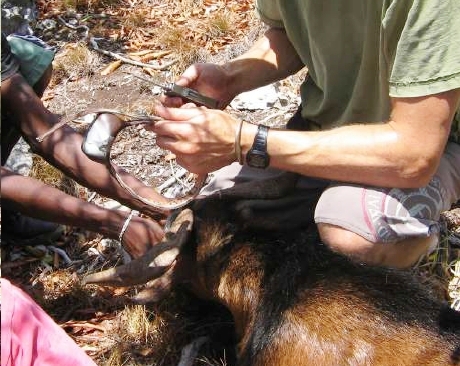Paper published on late stage dynamics of the goat eradication on Aldabra |23 July 2018

The goat eradication on Aldabra was one of the most ambitious and large scale invasive alien species eradications in SIF’s history, with goats finally eradicated from the atoll in 2012.
The results of the final stage of the eradication are presented in a paper recently published in the journal Biological Invasions. Although information about the eradication has been published previously, this paper presents the final phase of the eradication; including methods, eradication dynamics, outcomes and financial costs.
Goats were present on Aldabra for well over 100 years, with eradication efforts beginning in 1987; ultimately 2297 goats were culled over the entire 25-year period.
Over the 25-years various eradication and control methods were employed intermittently, and in 2007 a final campaign was launched using the Judas goat method. This campaign ran from 2007 to 2012, culminating with the complete eradication of goats from Aldabra in 2012.
The Judas method relies on the social nature of goats, and on their tendency to find one another and congregate. Individual goats are selected and sterilised, radio-collared and then released.![]()
After a set period the eradication team would use the radio collars to track the Judas goats on foot, culling any non-collared goats that were found.
As with most eradications the final stages are the most challenging, with a lower density of the target species and remaining individuals likely to be the best at avoiding detection.
During the five-year effort 227 goats were culled, 202 in the first four months and only 25 over the final years, six of which were Judas goats.
The total cost of the five-year eradication was US $185,105, an average of US $815/goat, or US $31/ha.
The eradication was not the largest goat eradication from an island, but it is notable because of the outstanding value of Aldabra, and because of the extremely challenging logistical difficulties that had to be overcome.
These included tidal restrictions, virtually no infrastructure on site, limited fresh water availability and challenging terrain as well as tropical conditions.
The use of the Judas goat method was highly effective and was probably the only feasible method by which the eradication could be completed.
Although the cost of the eradication was high, goats have had serious impacts on Aldabra’s ecosystem, and their eradication was an essential intervention
for conservation of Aldabra’s unique biodiversity.
SIF




